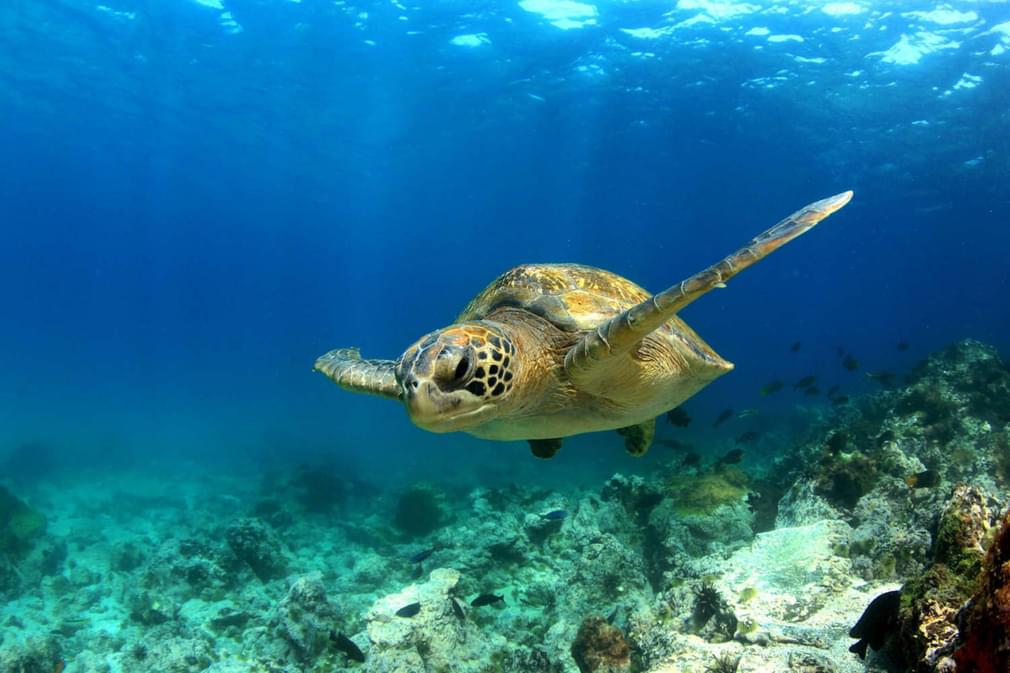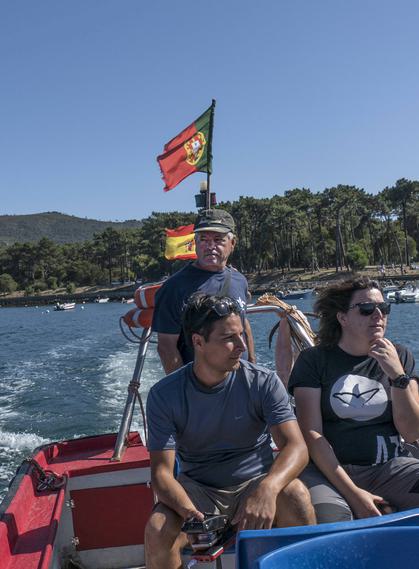How to identify sea turtles

Biologists recognise seven living species of sea turtles in the world, which are grouped into six genera: Leatherback, Loggerhead, Hawksbill, Ridley (Olive and Kemp’s), Green and Flatback. Five of them can be seen in Costa Rica, a country known for its rich biodiversity.
And it is no coincidence that sea turtles contribute to the balance of ecosystems. Indeed, their presence helps replenish both sea and beach nutrients and helps maintain the equilibrium of marine vegetation (eating algae and jellyfish for example).
It might seem hard to identify the different species but in fact it is quite easy: scientists check the number and pattern of scutes on the turtles shells. So once you have learned the basics below, it will be very easy to recognise them in the wild:

Here are some interesting facts about Costa Rica’s sea turtles:
Leatherback Sea Turtle (Dermochelys coriacea)
- It is named for its unique shell which is composed of a layer of thin, tough, rubbery skin that looks ‘leathery’.
- Leatherbacks are the largest of all sea turtles and the only one with a soft shell.
- Adults are 130-183 cm in carapace length and weigh between 660-1,100 kg. The largest leatherback ever recorded though was 305cm from head to tail and weighed 916kg!
- They are primarily found in the open ocean, although recent research indicates that they feed in areas just offshore.
- Population estimate: 35,000 nesting females.
Loggerhead Sea Turtle (Caretta caretta)
- It is named for its exceptionally large head.
- Many people have seen nesting females looking like they are crying. They are actually excreting excess salt through glands near their eyes.
- Adults are 80-110 cm in carapace length and weigh between 70-170 kg.
- They prefer to feed in coastal bays and estuaries, as well as in the shallow water along the continental ocean shelves.
- Population estimate: 60,000 nesting females.
Hawksbill Sea Turtle (Eretmochelys imbricata)
- It is named for its narrow head and hawk-like beak.
- It is one of the smaller sea turtle species.
- Sadly, it is often hunted for its shell to make hair ornaments and jewellery.
- Adults are 71-89 cm in carapace length and weigh between 46-70 kg.
- They are typically found around coastal reefs, rocky areas, estuaries and lagoons.
- Population estimate: 23,000 nesting females.
Olive Ridley Sea Turtle (Lepidochelys olivacea)
- It is named for its olive green coloured shell (though juveniles are charcoal grey).
- It is the most abundant of the sea turtle species.
- Playa Ostional and Playa Nancinte in Costa Rica are two of the world’s major nesting (arribada) sites.
- Adults are 62-70 cm in carapace length and weigh between 35-45 kg.
- They are generally found in coastal bays and estuaries, they typically forage off shore in surface waters or dive to depths of 150 m to feed on bottom dwelling crustaceans.
- Population estimate: 800,000 nesting females.
Green Sea Turtle (Chelonia mydas)
- It is named for the green colour of the fat under its shell.
- It is the largest of all the hard-shelled sea turtles is the only sea turtle that is strictly herbivorous as an adult.
- Green sea turtles can hold their breath longer than any other sea turtle, sometimes for more than three hours!
- Adults are 83-114cm in carapace length and weigh between 110-190kg.
- Mainly stay near the coastline and around islands and live in bays and protected shores, especially in areas with seagrass beds.
- Population estimate: 88,000 nesting females.
Note that mature males of all species typically have long curly tails that extend beyond the caudal point of the carapace. Females have shorter tails.
Hopefully you enjoyed learning more about these amazing creatures that have been swimming around the globe since the Jurassic era.
Remember to never disturb turtles when they come to the beach to lay their eggs, do not shine light on them (though red light is OK) be responsible and observe them from a distance in the company of an expert guide. It’s important to help conservation efforts to preserve the species.
In case you didn't know, Costa Rica is home to lush turtle nesting beaches along many unspoilt stretches of its lovely coastline. Leatherback, Green, Hawksbill, Olive Ridley and Loggerheads are the primary sea turtle species that live, nest and hatch here.
Find out what are the best turtle nesting spots in Costa Rica or sign up to our Costa Rica Expert Guide to learn more about this amazing country.
Our Costa Rica holidays Get in touch Subscribe to The Pothole
The Pothole is Pura Aventura's popular monthly email. We share what we love, what interests us and what we find challenging. And we don't Photoshop out the bits everyone else does. We like to think our considered opinions provide food for thought, and will sometimes put a smile on your face. They've even been known to make people cry. You can click here to subscribe and, naturally, unsubscribe at any time.
The Pothole is Pura Aventura's popular monthly email. We share what we love, what interests us and what we find challenging. And we don't Photoshop out the bits everyone else does. We like to think our considered opinions provide food for thought, and will sometimes put a smile on your face. They've even been known to make people cry. You can click here to subscribe and, naturally, unsubscribe at any time.








 By
By 

